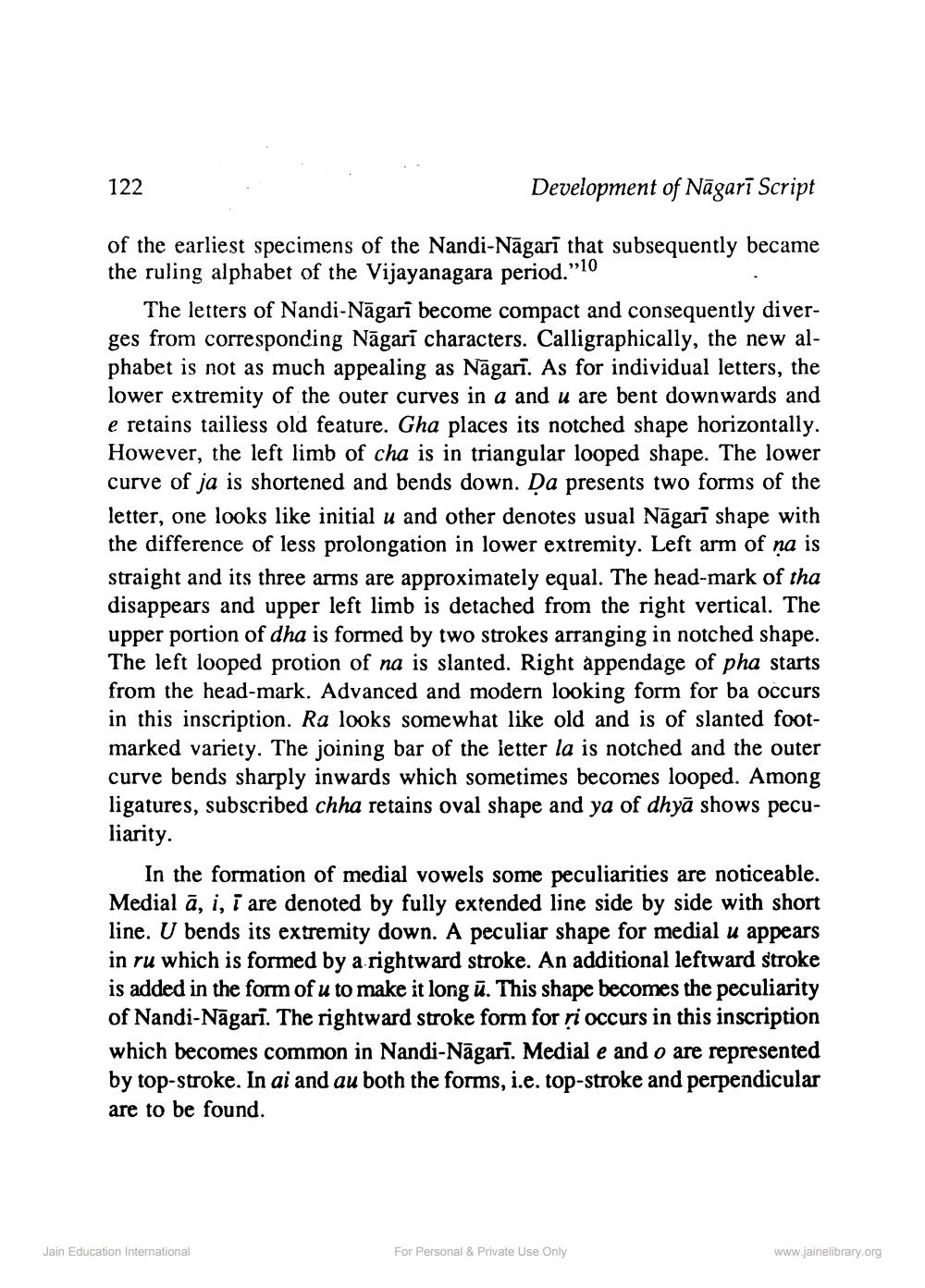________________
122
Development of Nāgarī Script
of the earliest specimens of the Nandi-Nāgarī that subsequently became the ruling alphabet of the Vijayanagara period.”10
The letters of Nandi-Nāgarī become compact and consequently diverges from corresponding Nāgari characters. Calligraphically, the new alphabet is not as much appealing as Nāgari. As for individual letters, the lower extremity of the outer curves in a and u are bent downwards and e retains tailless old feature. Gha places its notched shape horizontally. However, the left limb of cha is in triangular looped shape. The lower curve of ja is shortened and bends down. Da presents two forms of the letter, one looks like initial u and other denotes usual Nāgarī shape with the difference of less prolongation in lower extremity. Left arm of na is straight and its three arms are approximately equal. The head-mark of tha disappears and upper left limb is detached from the right vertical. The upper portion of dha is formed by two strokes arranging in notched shape. The left looped protion of na is slanted. Right appendage of pha starts from the head-mark. Advanced and modern looking form for ba occurs in this inscription. Ra looks somewhat like old and is of slanted footmarked variety. The joining bar of the letter la is notched and the outer curve bends sharply inwards which sometimes becomes looped. Among ligatures, subscribed chha retains oval shape and ya of dhyā shows peculiarity.
In the formation of medial vowels some peculiarities are noticeable. Medial ā, i, i are denoted by fully extended line side by side with short line. U bends its extremity down. A peculiar shape for medial u appears in ru which is formed by a rightward stroke. An additional leftward stroke is added in the form of u to make it long ū. This shape becomes the peculiarity of Nandi-Nāgari. The rightward stroke form for ri occurs in this inscription which becomes common in Nandi-Nāgari. Medial e and o are represented by top-stroke. In ai and au both the forms, i.e. top-stroke and perpendicular are to be found.
Jain Education International
For Personal & Private Use Only
www.jainelibrary.org




